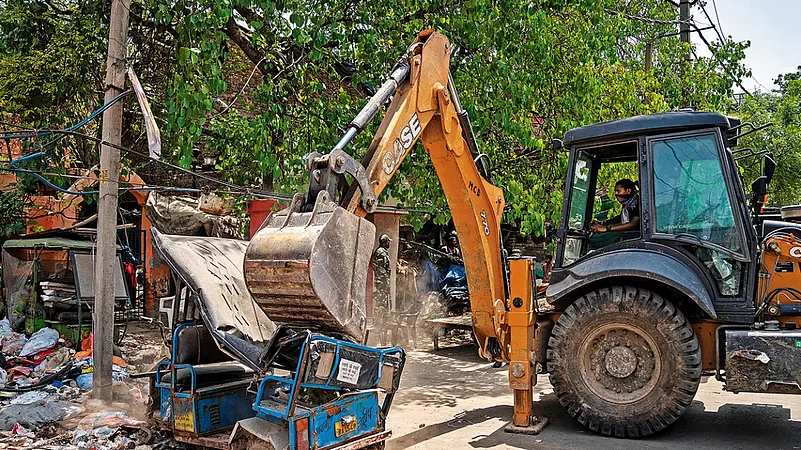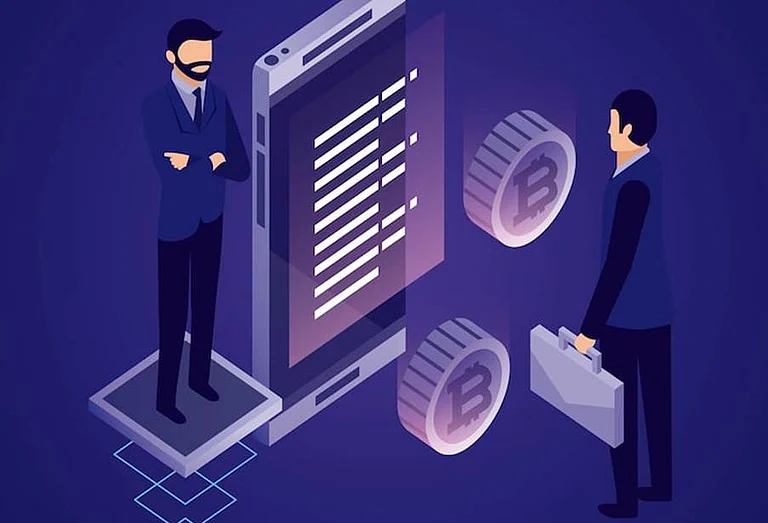The spectacle of the crushed cart of a street vendor, a small child picking up coins and tetra packs from the rubble of a demolished juice box, and scenes of petrified and humiliated families in Jahangirpuri indicate the fault lines in state-citizenship relations. For those who engage with urban space and politics, the Jahangirpuri incident brings back memories of the infamous Turkman gate demolition during the Emergency 46 years ago; fierce opposition to the demolition had led to police firing and killing of residents of the area. While instances of retaliatory and ‘punishment’ demolition have overt political meaning and manifestation, one is also aware that spatial and political dimensions of large-scale demolition in Delhi have specific phases: before and during the Emergency in the 1970s, before the Asian Games in the 1980s and before the Commonwealth Games of 2010. Similar patterns and phases can be identified in several other big and small cities under the pretext of beauty, aesthetics, urban infrastructure, development, etc. This brings us to the question: how do we comprehend the ordeal of the people at the receiving end of demolition and eviction? How should one relate to the idea of the right to the city for the people on the fringes?
ALSO READ: Tentacles Of Power
The ruthless demolitions have also been debated and questioned for their legality and how demolition politics emerged and impacted cities and their constituents. While the spectacle of the bulldozer as a feared and cruel instrument of municipal and police agencies has been deployed to demonstrate the masculine state’s ruthless power, the question of life, livelihood and dignity continue to get compromised in urban spaces. While urban informal settlements are often depicted as a nuisance, filthy, and illegal by the middle-class consumer-citizen, for the state and market, the space they occupy needs to be secured for the neoliberal development agenda. Although the Supreme Court (SC)—in the Olga Tellis vs the Bombay Municipal Corporation in 1985—had ruled that pavement dwellers live on “filthy footpaths out of sheer helplessness” and not with the object of offending, insulting, intimidating or annoying anyone, the demolition continued unabated. These demolitions often happen during extreme weather conditions—scorching heat, chilling winter, heavy monsoon; and the visuals of affected families are unsettling.
However, the recent demolition drives by civic authorities in Jahangirpuri and the government of Madhya Pradesh in Khargone, and some other places, seem qualitatively and politically different from past ones. They raise several questions not because the demolition drives are new to India but because of the way they were carried out and the politics guiding them. Some of these aspects we try to unravel below.
Firstly, it has been a failure of the developmental state that even after 75 years of Independence, a large segment of the Indian population faces livelihood marginalities, both in urban and rural areas, more so in rural areas. In their search for new livelihood possibilities, they migrate from rural to urban areas. Without any housing and income provisions, they largely squat and live on public and private lands, giving rise to informal settlements, such as slums or jhuggi and jhopdi. As these settlements remain unregulated, with hardly any possibility of development, the rising population spills over to nearby streets and roads—not only for living space but also for petty business and earnings. The sustained rural-urban migration of marginalised groups further adds to this. The deficiency of access to livelihoods by depriving spaces is akin to denying the ‘right to life’. This intertwined relation was referred to as ‘right to livelihood as a part of the right to life’ in the Olga Tellis case by the Supreme Court. Further, in another judgment related to Saudan Singh vs NDMC in 1989, the SC had held that all pucca roads and streets vest with the state, but the state holds them as trustees of the public and as such the public can use the same as a matter of right. Thus, livelihoods, rights to life, and space are closely related to slum-dwellers and their citizenship rights. The failure of the developmental state to secure the livelihoods of the people has resulted in this mess our cities are undergoing.
Secondly, can the marginalised sections squat permanently on all public spaces? No. This will result in chaos and may lead to a breakdown of the city’s efficiency and public transportation system itself. As in the case of other local bodies, Sections 320 and 321 of the Delhi Municipal Corporation Act prohibit any ‘structure and fixture on streets’ and dumping of ‘things on streets’, respectively. Further, Section 322 empowers the commissioner to remove such temporary ‘structures’ and ‘things’ from footpaths and streets. But permanent structures cannot be demolished before appropriate notice. As per the Delhi Municipal Corporation Act, 1957, under Section 343, “no order of demolition shall be made unless the person has been given by means of a notice served in such manner as the Commissioner may think fit, a reasonable opportunity of showing cause why such order shall not be made”. Notice of demolition has to give a minimum of five and a maximum of 15 days to the property owner to demolish such a structure. This provision also allows an appeal against demolition and ‘demolition without rehabilitation policy in place’. Further, under the Delhi Urban Shelter Improvement Board Act, 2010 through which the Delhi Slum and JJ Rehabilitation and Relocation Policy were notified in 2017, even structures encroaching on government land cannot be demolished without a rehabilitation policy in place. However, as we have seen, many permanent structures were demolished in Jahangirpuri, as well as Khargone, depriving citizens of access to justice.
Thirdly, if the rules are so sharp and unambiguous, why did state agencies carry out the drive without any intimation to citizens, depriving them of access to justice? Has this swift approach been the usual approach of the state, or was it an exception? We argue that this has not been a standard approach of the state, but it was exceptional because of two reasons: (a) it targeted a specific religious community which has been subjected to hate politics by the ruling dispensation for consolidation of its vote bank, and (b) apparently, the encroachments per se were not the issues, but the backgrounds of Ram Navami violence, both in Jahangirpuri and Khargone, were used for demolitions targeting a specific religious community.
Fourthly, there has been a substantive shift in citizen-subjects’ confidence to challenge brutal action through community mobilisation and push back through collective assertion. Though numerous community-based groups, sangathans and micro-movements in the past had presented some possibility of politics from below, the manufacturing and construction of the issue through the state-media nexus constrain the possibility of such politics in recent times. The partisan stance taken by bureaucrats, media, and political class makes the affected community feel excluded and alienated.
In sum, the recent bulldozer actions in Delhi and Khargone show government action mixed with malice. It deprives citizens of their livelihoods, right to life and access to justice. This heralds a new evolving politics of eviction and demolition.
(Views expressed are personal)
ALSO READ
Manish K. Jha is professor at centre for community organisation and development practice, TISS, Mumbai
Abdul Shaban is professor at school of development studies, TISS, Mumbai
























